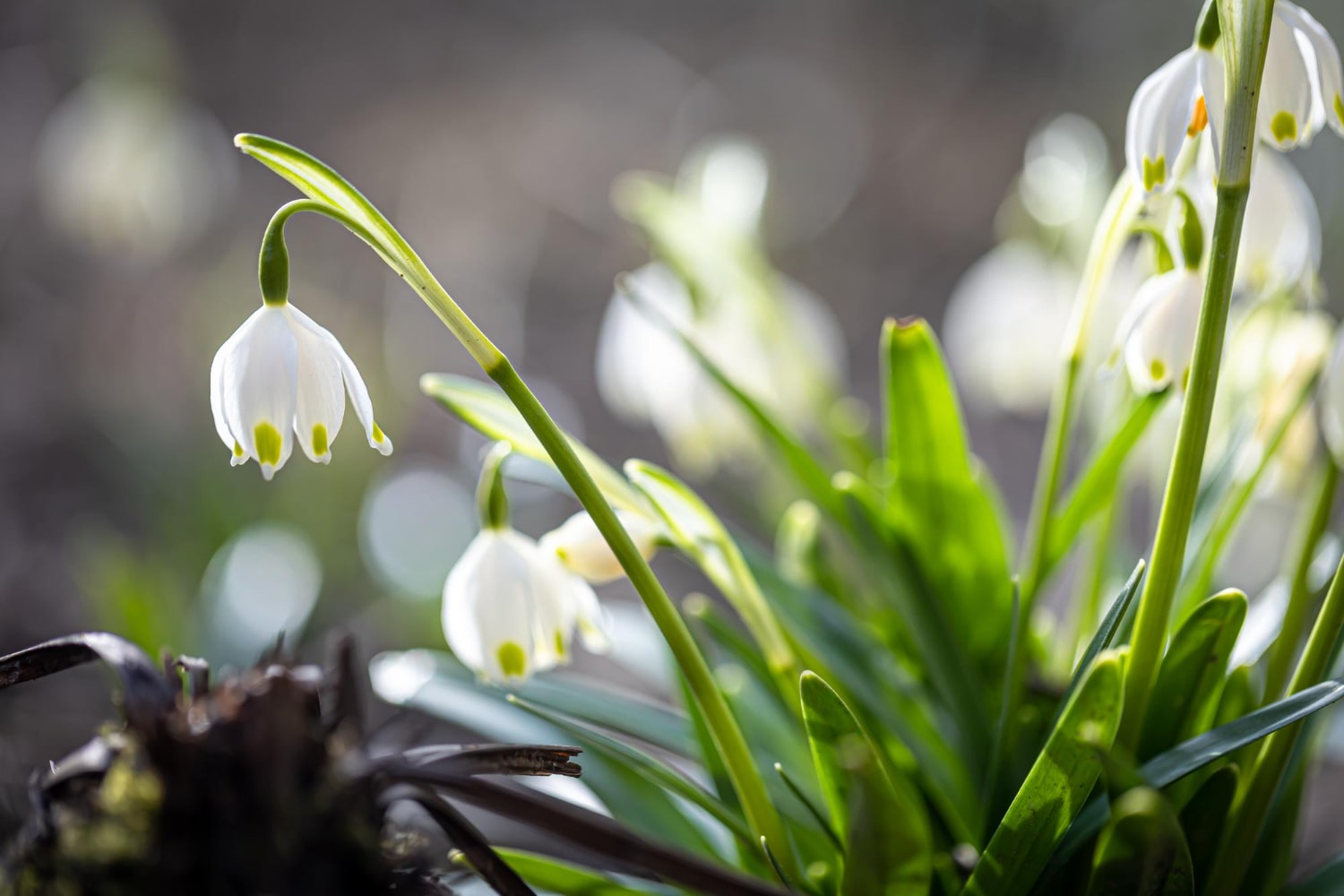Snowdrops are among the first flowers to bloom in spring, often emerging while snow still covers the ground. These delicate and charming plants symbolize the rebirth of nature and are admired by both gardeners and artists. Their presence signals the end of winter and the arrival of warmer days. Though they appear fragile, snowdrops hold many fascinating secrets. Here are some interesting facts about snowdrops you might not know.
- Snowdrops can grow even under snow because their bulbs produce heat that slightly melts the surrounding ice. This allows them to bloom before temperatures significantly rise. That is why they are considered one of the earliest signs of spring.
- Their botanical name is Galanthus, which means milk flower in Greek. There are more than 20 recognized species of snowdrops, mainly found in Europe and western Asia. The most well-known species is the common snowdrop.
- Snowdrop flowers emit a subtle, sweet fragrance that attracts early spring insects. This scent is especially noticeable on cool days. It helps the plants play an important role in the ecosystem at the very start of the growing season.
- Snowdrops contain galantamine, a substance used in the treatment of Alzheimer’s disease. The highest concentration of this compound is found in the common snowdrop. Because of its medicinal value, some snowdrop species are threatened in the wild.
- Despite their beauty, snowdrops are poisonous. Ingesting their bulbs or leaves can cause nausea, vomiting and other symptoms of poisoning in humans and animals. It is important to handle them with care, especially around children or pets.
- Snowdrops can stay in the same spot for many years, multiplying by forming new bulbs. Over time, they create dense clumps. This makes them ideal for natural-looking garden compositions.
- In different cultures, the snowdrop symbolizes hope, purity and new beginnings. In Christian tradition, it represents innocence and spiritual rebirth. Snowdrops are frequent motifs in art and literature.
- In the wild, snowdrops grow in shady forests, near streams and on damp slopes. They prefer moist, well-drained soil. These plants tolerate frost and unpredictable weather conditions very well.
- The blooming period of snowdrops usually lasts around two weeks. After flowering, the leaves turn yellow and the plant enters dormancy until the next spring. Even if snow falls again, the plant can survive.
- Some snowdrop species are listed as endangered and are protected by law in certain countries. Picking them in their natural habitats is often prohibited. This is necessary to preserve wild populations for future generations.
- Snowdrops also reproduce by seeds, which are dispersed by ants. The ants are attracted to a fatty coating on the seeds and carry them away, leaving the seed itself in the soil. This natural process is called myrmecochory.
- These flowers are popular in gardens, especially under trees, in flowerbeds and rock gardens. They require little maintenance and are resistant to most diseases. This makes them perfect for low-maintenance, naturalistic landscapes.
- In many languages, their names are associated with snow and spring. In English, they are called snowdrops, and in German, Schneeglöckchen. This reflects how strongly they are linked to the change of seasons.
- Snowdrop seeds require a period of cold to germinate. They need to rest in the ground through winter before starting to grow in spring. That is why they cannot sprout at other times of the year.
- Snowdrops are often depicted in paintings, especially from the Impressionist period. Artists use them as symbols of purity and freshness. In literature, they often represent the fragility of life and the promise of renewal.
- In the United Kingdom, annual Snowdrop Week events are held in early spring. Thousands of people visit parks and gardens to admire blooming snowdrops. These events also help promote the conservation of rare snowdrop varieties.
- Some cultivated snowdrops have unusual shades of green or yellow. These rare forms were developed by gardeners and are popular among collectors. Their distinctive colors make them unique in the snowdrop world.
- Snowdrops are not attractive to most pests. Rabbits and deer generally avoid them, and the plants rarely suffer from diseases. This makes them a practical choice for home and woodland gardens.
These interesting facts about snowdrops show how remarkable these delicate flowers truly are. They hold both beauty and biological adaptations that allow them to survive in harsh conditions. Snowdrops are more than just a symbol of spring; they are also a key part of natural habitats and gardening traditions. Learning about their story and features can deepen your appreciation for the wonders of nature.





